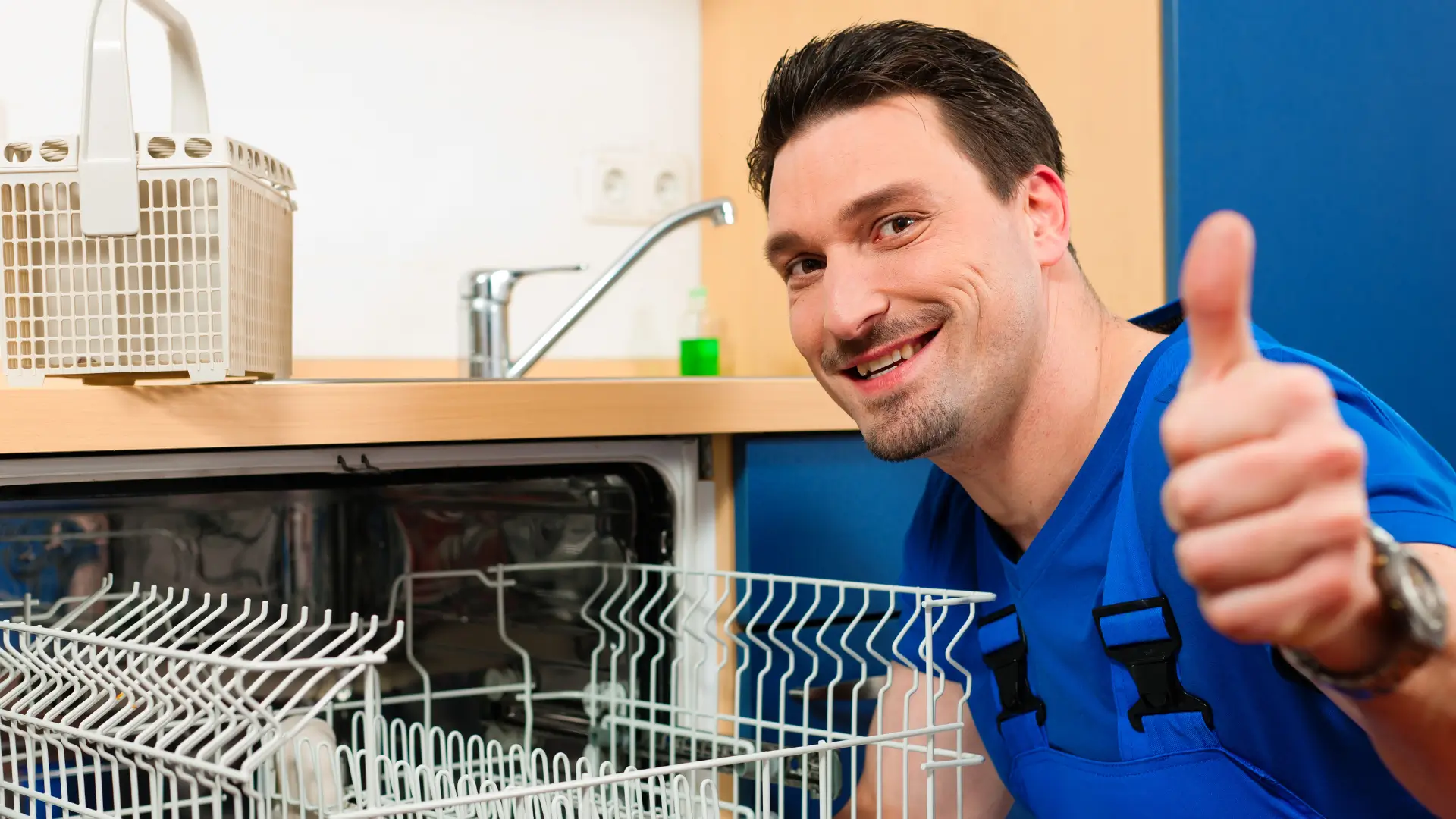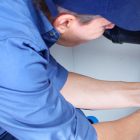If you’ve noticed your dishwasher isn’t cleaning as efficiently, or it makes strange noises, you might be dealing with a faulty dishwasher motor. In this guide, we’ll walk you through how to diagnose, remove, and replace that motor to get your dishwasher back in working order. Replacing a faulty dishwasher motor might sound intimidating, but with a bit of patience and the right tools, you can tackle it yourself. Ready? Let’s dive in!
Call Now for Professional Help: +971545356777
Contents
Symptoms of a Faulty Dishwasher Motor
Before jumping into the replacement process, it’s essential to know if your dishwasher motor is truly faulty. Several signs can indicate that the motor is malfunctioning. Identifying these symptoms early can save you time and prevent further damage to your appliance.
1. Strange Noises Coming from the Dishwasher
If you hear grinding, humming, or squealing sounds from your dishwasher, it could be a sign of a faulty dishwasher motor. These noises might indicate that the motor’s bearings are worn out, which can hinder the motor from working correctly. Sometimes, the motor might struggle to run, causing these strange sounds.
2. Dishes Are Not Being Cleaned Properly
One of the clearest signs of a faulty dishwasher motor is poorly cleaned dishes. When the motor is malfunctioning, the water pressure decreases, which means that the dishes aren’t being cleaned as thoroughly as they should be. If you’re still finding residue or dirt on your plates after a full wash cycle, it’s worth checking the motor.
3. Dishwasher Fails to Drain
A faulty dishwasher motor can also prevent the dishwasher from draining properly. If water remains pooled at the bottom after a cycle, the motor may be to blame. A functional motor helps pump out the water during the draining process, and if it’s not doing its job, you’ll notice standing water in your machine.
4. Dishwasher Doesn’t Start
If your dishwasher isn’t starting at all, a faulty dishwasher motor could be the culprit. This often happens when the motor has completely burned out. If you’ve tried other troubleshooting steps like checking the power supply and control panel, and your dishwasher still won’t turn on, the motor may need replacement.
If you’re experiencing one or more of these issues, it’s time to consider replacing the faulty dishwasher motor.
Tools You’ll Need to Replace a Faulty Dishwasher Motor
Before diving into the repair process, gather all the tools you’ll need. This makes the job smoother and ensures you won’t need to pause halfway through. Here’s a list of essential tools required for replacing a faulty dishwasher motor:
- Screwdriver set
- Wrench
- Needle-nose pliers
- Towels or rags (for cleaning up spills)
- Replacement dishwasher motor (ensure it’s compatible with your dishwasher model)
- A small bucket (to catch any residual water)
While these tools should be enough for most dishwasher motor replacements, double-check your dishwasher’s manual for any model-specific tools you might need.
Need Help? Call: +971545356777
Step-by-Step Guide to Replace a Faulty Dishwasher Motor
Now that you know the signs of a faulty dishwasher motor and have the necessary tools, it’s time to get started. Follow these detailed steps to replace the motor in your dishwasher safely and efficiently.
1. Disconnect Power and Water Supply
Safety first! Before you start working on your dishwasher, always disconnect it from the power source. Either unplug the dishwasher from the wall or switch off the circuit breaker that controls the appliance. Next, turn off the water supply to prevent any unwanted leaks while working.
2. Remove the Dishwasher
In many cases, replacing a faulty dishwasher motor will require you to pull the dishwasher out from under the counter. Begin by unscrewing the mounting brackets that hold the dishwasher in place. Then, carefully pull the dishwasher out, ensuring you don’t damage any electrical cords or water hoses.
3. Locate the Motor
Once the dishwasher is free from the counter, tip it back slightly to access the underside, where the motor is typically located. The motor is usually found at the bottom of the appliance near the center. It will be connected to a pump assembly, which helps circulate and drain water during the cycle.
4. Disconnect the Faulty Dishwasher Motor
Using your screwdriver or wrench, begin by disconnecting the wires and bolts securing the motor. It’s crucial to be gentle here to avoid damaging other components. Take note of where each wire is connected so you can easily reassemble everything later. You might also find a few clamps or hose connections that need to be removed.
If there’s any water left in the hoses, have your bucket ready to catch the spills.
5. Install the New Dishwasher Motor
Now it’s time to install the replacement motor. Position the new motor in the same spot as the old one, making sure the connections line up properly. Secure it in place with the same bolts, screws, or clamps. Reconnect all the wires exactly as they were before.
Double-check all connections to ensure the motor is firmly attached and aligned with the pump.
Need Assistance? Contact Us: +971545356777
Testing and Final Steps After Replacing the Faulty Dishwasher Motor
With your new motor securely in place, you’re almost done. However, it’s crucial to follow these final steps to ensure everything is working correctly.
1. Reassemble the Dishwasher
Once the new motor is installed, it’s time to reassemble the dishwasher. Tip the appliance back upright and carefully slide it back into its original position under the counter. Reconnect the mounting brackets, ensuring it’s firmly in place. Be cautious not to pinch any wires or hoses as you push it back.
2. Restore Power and Water Supply
Turn the power and water supply back on. If you switched off the breaker, flip it back to the “on” position. For dishwashers plugged into an outlet, simply plug it back in.
3. Test the Dishwasher
Run a short wash cycle to ensure everything is functioning properly. Pay attention to the sounds the machine makes and check that the dishes are being cleaned thoroughly. Also, ensure that the dishwasher drains correctly and no water is left at the bottom.
If everything runs smoothly, congratulations! You’ve successfully replaced your faulty dishwasher motor.
However, if the dishwasher still isn’t functioning as expected, double-check the motor’s installation or consider consulting a professional technician. A small error in wiring or alignment can sometimes cause issues.
Need Expert Help? Call +971545356777
Why Regular Maintenance Prevents Faulty Dishwasher Motors
After going through the trouble of replacing a faulty dishwasher motor, it’s a good idea to take preventive measures to extend the life of your dishwasher’s new motor. Regular maintenance can prevent costly repairs and replacements down the road. Here are some tips to keep your dishwasher running smoothly:
1. Clean Filters Regularly
A clogged filter puts unnecessary strain on your motor. Ensure that you’re cleaning the filter at least once a month to maintain efficient water flow and reduce the risk of motor failure.
2. Use the Right Detergent
Not all detergents are created equal. Using a dishwasher-safe detergent that’s designed for your model can help reduce build-up and keep the motor running smoothly.
3. Avoid Overloading the Dishwasher
Overloading your dishwasher forces the motor to work harder, which can lead to premature wear and tear. Load the dishwasher according to the manufacturer’s guidelines, leaving space between dishes to allow proper water circulation.
4. Schedule Regular Service
Even if everything seems fine, scheduling a professional service for your dishwasher once a year can help catch potential issues before they become major problems. A technician can inspect your motor and other components to ensure they’re in top condition.
By following these tips, you’ll ensure that your new dishwasher motor serves you for years to come. However, if you run into any trouble, don’t hesitate to contact us for assistance.



